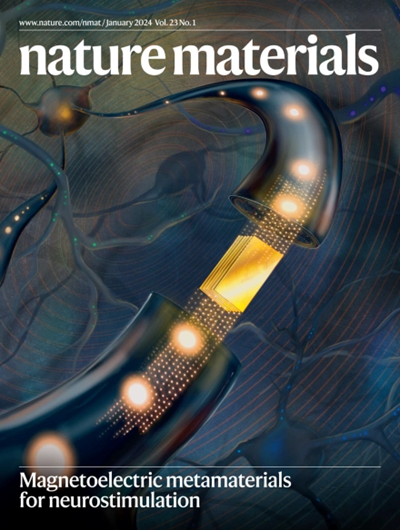Accelerated data-driven materials science with the Materials Project
IF 38.5
1区 材料科学
Q1 CHEMISTRY, PHYSICAL
引用次数: 0
Abstract
The Materials Project was launched formally in 2011 to drive materials discovery forwards through high-throughput computation and open data. More than a decade later, the Materials Project has become an indispensable tool used by more than 600,000 materials researchers around the world. This Perspective describes how the Materials Project, as a data platform and a software ecosystem, has helped to shape research in data-driven materials science. We cover how sustainable software and computational methods have accelerated materials design while becoming more open source and collaborative in nature. Next, we present cases where the Materials Project was used to understand and discover functional materials. We then describe our efforts to meet the needs of an expanding user base, through technical infrastructure updates ranging from data architecture and cloud resources to interactive web applications. Finally, we discuss opportunities to better aid the research community, with the vision that more accessible and easy-to-understand materials data will result in democratized materials knowledge and an increasingly collaborative community. Materials design and informatics have become increasingly prominent over the past several decades. Using the Materials Project as an example, this Perspective discusses how properties are calculated and curated, how this knowledge can be used for materials discovery, and the challenges in modelling complex material systems or managing software architecture.


加速数据驱动材料科学与材料项目
材料项目于2011年正式启动,旨在通过高通量计算和开放数据推动材料发现。十多年后,“材料计划”已成为全球60多万材料研究人员不可或缺的工具。本展望描述了材料项目作为一个数据平台和软件生态系统如何帮助塑造数据驱动的材料科学研究。我们将介绍可持续软件和计算方法如何加速材料设计,同时在本质上变得更加开源和协作。接下来,我们将介绍材料项目用于理解和发现功能材料的案例。然后,我们描述了通过从数据架构和云资源到交互式web应用程序的技术基础设施更新来满足不断扩大的用户群需求的努力。最后,我们讨论了更好地帮助研究社区的机会,以更易于访问和易于理解的材料数据为愿景,将导致材料知识的民主化和日益协作的社区。
本文章由计算机程序翻译,如有差异,请以英文原文为准。
求助全文
约1分钟内获得全文
求助全文
来源期刊

Nature Materials
工程技术-材料科学:综合
CiteScore
62.20
自引率
0.70%
发文量
221
审稿时长
3.2 months
期刊介绍:
Nature Materials is a monthly multi-disciplinary journal aimed at bringing together cutting-edge research across the entire spectrum of materials science and engineering. It covers all applied and fundamental aspects of the synthesis/processing, structure/composition, properties, and performance of materials. The journal recognizes that materials research has an increasing impact on classical disciplines such as physics, chemistry, and biology.
Additionally, Nature Materials provides a forum for the development of a common identity among materials scientists and encourages interdisciplinary collaboration. It takes an integrated and balanced approach to all areas of materials research, fostering the exchange of ideas between scientists involved in different disciplines.
Nature Materials is an invaluable resource for scientists in academia and industry who are active in discovering and developing materials and materials-related concepts. It offers engaging and informative papers of exceptional significance and quality, with the aim of influencing the development of society in the future.
 求助内容:
求助内容: 应助结果提醒方式:
应助结果提醒方式:


